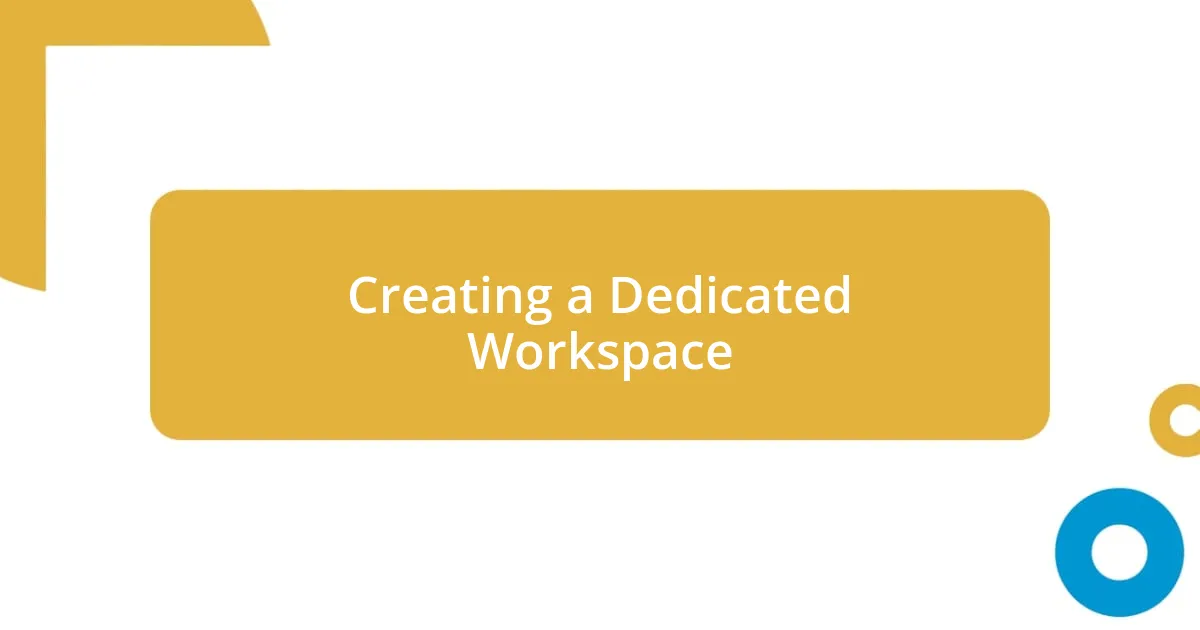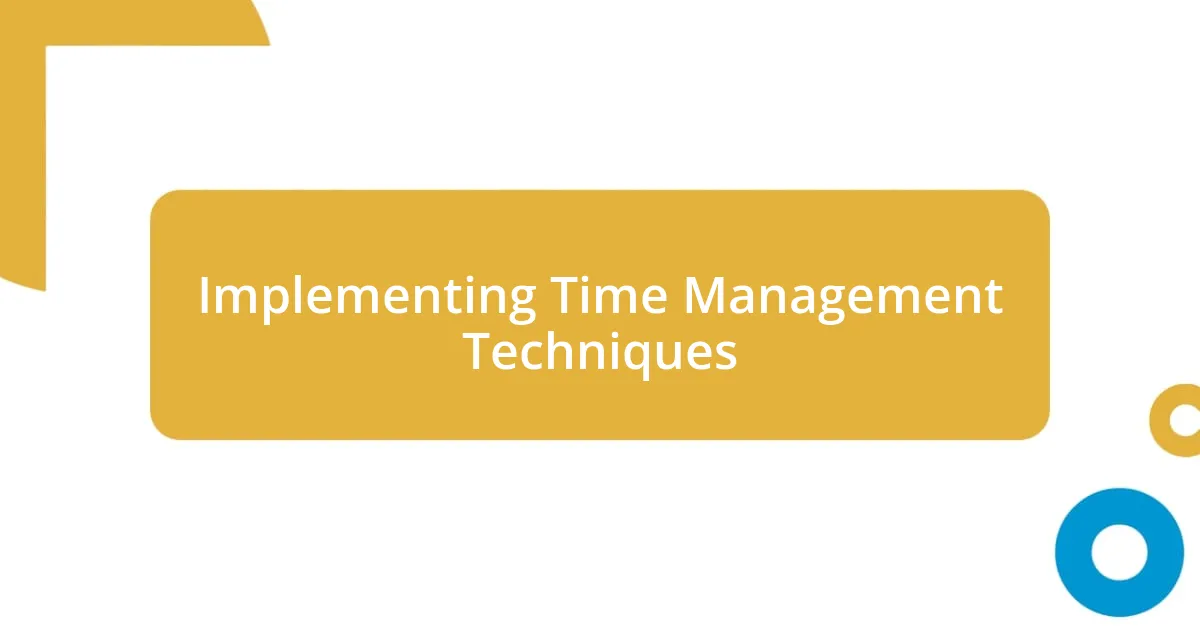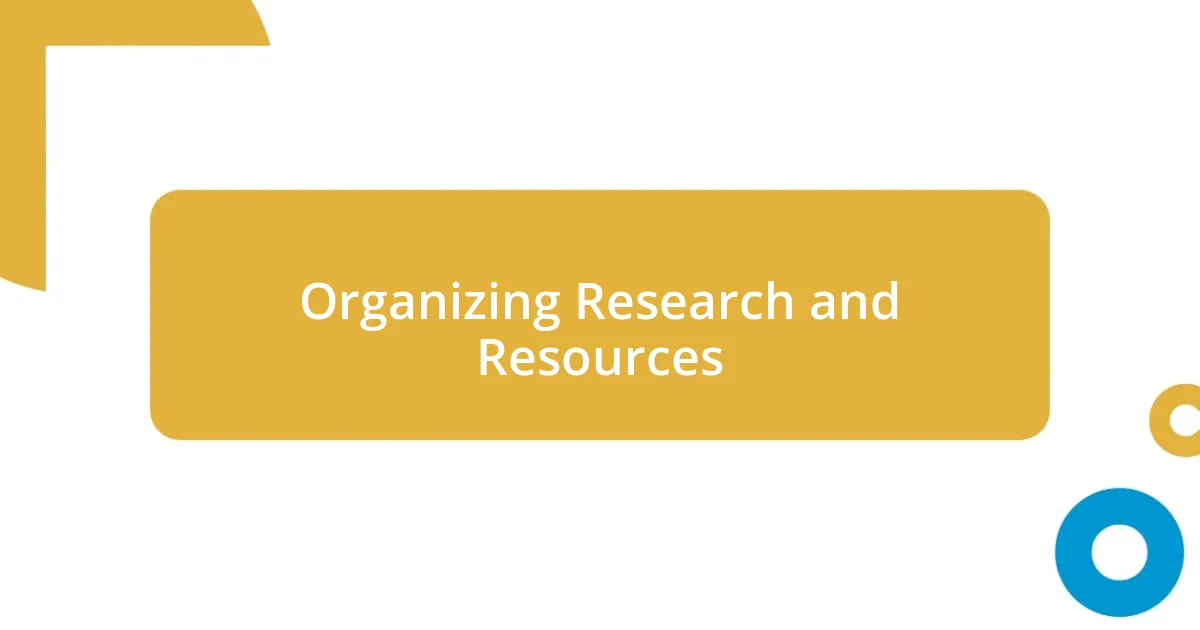Key takeaways:
- Establishing a flexible writing routine, identifying productive hours, and allowing breaks fosters creativity.
- Creating a dedicated workspace with personal touches enhances focus and motivation.
- Utilizing digital tools like Notion and Google Docs increases organization and facilitates collaboration.
- Setting clear, actionable writing goals and organizing research efficiently boosts productivity and progress tracking.

Establishing a Writing Routine
When I started my writing journey, establishing a routine felt daunting at first. I remember blocking out time in my calendar each day, treating it like an important meeting. Did I stick to it? Honestly, not always; life can be unpredictable. But those moments of consistency became my sanctuary, allowing creativity to flourish amidst the chaos.
I also found it crucial to identify my most productive hours. For me, that’s early mornings when the world is quiet, and my mind is fresh. Have you ever noticed how those early hours can feel so full of promise? I often wake up with a cup of coffee, inspired by the stillness, jotting down thoughts that might otherwise get lost in the busyness of the day.
Another key element is flexibility. While structure is beneficial, I learned the hard way that rigid adherence can stifle creativity. I used to feel guilty for taking a day off, but now I embrace it as a necessary part of my process. Life changes, and so should my routine. How do you cope when your inspiration wanes? I take a step back and trust that the words will come back to me when the time is right.

Creating a Dedicated Workspace
Creating a dedicated workspace has been transformative for my writing process. It’s not just about having a desk and a chair; it’s about cultivating an environment that inspires and motivates. I remember when I first designated a corner of my living room as an official writing space. Adding personal touches—a few books I cherish, some inspiring quotes pinned to the wall—made it feel uniquely mine. That cozy corner became a haven where ideas flowed more freely.
To ensure my workspace enhances my productivity, I focus on these elements:
- Comfortable Furniture: A supportive chair and spacious desk keep me comfortable during long writing sessions.
- Minimal Distractions: I keep clutter to a minimum, allowing my mind to concentrate only on my words.
- Aesthetic Environment: Natural light and pleasing decor create a warm atmosphere that fuels creativity.
- Essential Tools: Having notepads, pens, and a laptop all within reach prevents interruptions.
- Personal Touches: Incorporating things that inspire me—like a plant or artwork—makes the space feel inviting.
Each time I sit down to write, I feel a sense of belonging and purpose in that space, elevating my creative energy and focus.

Using Digital Tools for Organization
Using digital tools has become a game-changer for my writing organization. I often rely on apps like Notion and Trello to keep track of ideas, deadlines, and research. I still remember the first time I integrated a digital tool into my workflow; I could finally see everything in one place. It was exhilarating! Those platforms let me break down larger projects into manageable tasks, which feels much less overwhelming.
One of my favorite aspects of digital organization is the ability to access everything from my phone or laptop. Have you ever had a brilliant idea while you’re out and about? With tools like Evernote, I can quickly jot down thoughts or record spontaneous inspiration. These moments often lead to the most creative breakthroughs when I’m back at my desk, as I can revisit those raw ideas when I have more time to develop them.
Moreover, collaboration is a breeze with shared digital solutions. For instance, when I was co-authoring a piece, Google Docs allowed us to work in real-time, exchanging ideas organically. Seeing the changes unfold and having discussions in the comments section felt seamless. It opened my eyes to different viewpoints and made the writing process more dynamic. Do you find collaborating enhances your writing perspective? For me, it absolutely does, turning solitary work into an engaging, communal experience.
| Tool | Features |
|---|---|
| Notion | All-in-one workspace with customizable databases, task management, and note-taking capabilities. |
| Trello | Visual project management tool that utilizes boards, lists, and cards for tracking tasks. |
| Evernote | Note-taking app that allows capturing ideas through text, audio, and images, easily searchable. |
| Google Docs | Real-time collaborative document editor that supports commenting, history tracking, and easy sharing. |

Implementing Time Management Techniques
Implementing effective time management techniques has been crucial in my journey as a writer. One method that I consistently rely on is the Pomodoro Technique. Setting a timer for 25 minutes of focused writing, followed by a 5-minute break, has made marathon writing sessions feel more manageable. I recall an afternoon when I was tangled in writer’s block; using this technique helped me break through that barrier. It’s amazing how structured time can create a flow that feels more productive and less daunting.
Another technique I’ve embraced is prioritization. Life can throw a multitude of tasks our way, and I often find myself overwhelmed. So, I’ve started listing my writing objectives for the week every Sunday evening. This simple practice not only clarifies what needs attention, but it also sets a sense of direction. Have you ever felt like you were working hard but not making progress? I know I have—that’s when prioritizing really shines. It allows me to focus on high-impact tasks and celebrate small victories throughout the week.
Additionally, I’ve found that establishing a routine not only helps me manage time effectively but also creates a rhythm that enhances my creativity. For example, I set aside mornings as my core writing time; there’s something magical about that quiet hour. As the sun streams in, ideas flow more freely. It’s not just about discipline; it’s about creating conditions where inspiration can thrive. Do you have a preferred time for writing? Finding that sweet spot might just transform your writing experience, as it did for me.

Setting Clear Writing Goals
Setting clear writing goals is essential for staying organized and focused. I’ve learned that breaking down my long-term writing aspirations into smaller, actionable goals helps me track my progress more effectively. For instance, instead of simply stating, “I want to write a book,” I might set a goal of drafting 500 words a day. This way, I can measure my success in tangible steps.
I remember a time when I had a big project looming over me, and I felt overwhelmed. Instead of tackling it all at once, I began setting weekly goals to write specific chapters or sections. Each small victory felt rewarding and fueled my motivation. Have you ever experienced that rush after completing a task? I find that celebrating these little milestones makes the entire writing journey feel more enjoyable and less daunting.
Setting goals also transforms my writing practice into a more structured routine. I often map out my objectives for the month, taking into account deadlines and personal commitments. This isn’t just about practicality; it’s about creating a vision for what I want to achieve. By aligning my daily activities with these goals, I cultivate a sense of purpose. It compels me to write with intention and keeps the creative juices flowing. So, what are your writing goals? Defining them might just be the key to unlocking your potential.

Organizing Research and Resources
Organizing research and resources is a game changer in my writing process. I’ve created a digital folder system that lets me easily access my notes, articles, and sources. Each project has its own folder, and within it, I categorize materials by theme or topic. This way, when I’m deep into a draft, I can quickly find the references that support my arguments without losing momentum. Doesn’t it feel annoying to waste time searching for that one perfect quote? Trust me; a little upfront organization can save a lot of headaches later.
I also make use of tools like Evernote and Trello to keep track of my ideas and resources. For instance, whenever I stumble upon an interesting article or a thought-provoking quote, I jot it down immediately. I remember a particular day when I was researching for an article about creativity. I collected various resources—from interviews with artists to scientific studies on inspiration—into an Evernote notebook. It was as if I was building a treasure trove of insights that I could dip into at any time. Have you ever wished you had a wealth of information at your fingertips? This method makes that wish a reality.
Lastly, I find that maintaining a balance between digital organization and physical resources is crucial. I keep a designated binder for hard copies of essential research. During a recent project, I had a stack of articles printed out on the topic of character development. As I read and annotated them, I had that gratifying feeling of connecting the dots. It was almost like piecing together a puzzle. Do you remember the last time you felt that sense of clarity? Combining both digital and tangible resources can really enhance your understanding and approach to your writing.














